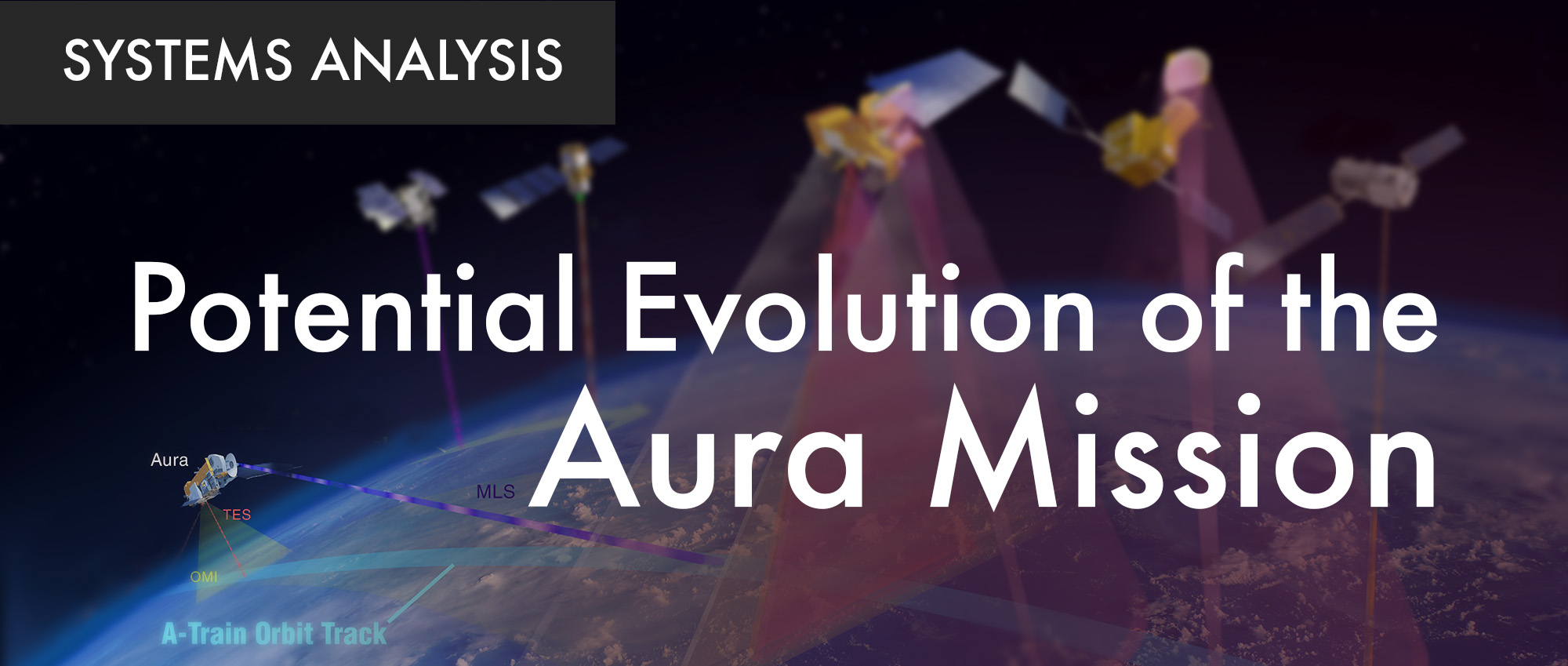
(as of Feb 13, 2024)
The Aura satellite and its instruments are in good/excellent health, having aged well. This status is expected to continue to the end of the mission. Insufficient power generation by the solar array is conservatively predicted to be the life-limiting factor for the Aura satellite and instruments by mid-2026.
Since launch in 2004, the polar sun synchronous orbit of the spacecraft has been stable and repeatable through periodic spacecraft maneuvers (i.e., inclination adjust, IAM, and drag make-up, DMU, maneuvers), which require fuel to maintain Aura’s position in the A-Train constellation of satellites. The final IAMs were done in April 2023 to save remaining fuel. Consequently, the spacecraft is slowly drifting over time. The final DMUs were performed in January 2023, so the spacecraft will slowly begin losing altitude, but only a few kilometers by the end of the mission.
An indicator of the drift is the mean local time (MLT) crossing of the spacecraft over the equator during the day. The graph shows the possible temporal evolution of this drift, which is <15 min through late-2024, ~30 min by mid-2025, and less an hour by mid-2026. Overall, this amount of drift is predicted to be minor from the perspective of data quality for all MLS and OMI data products. That is, the MLS and OMI instrument teams will be able to account for this minor drift in the data product retrieval algorithms.
The MLS and OMI retrieval algorithms can also account for potential changes in the solar beta angle so that data product quality will be unaffected. However, for OMI, the solar beta angle will exceed the “Science upper limit” in late 2025 for several months. The solar beta angle will return to within its limits by the end of 2025, remaining there through mid-2026. The OMI team believes that the minor excursion in late 2025 will not negatively affect the science and trend quality of the OMI products.